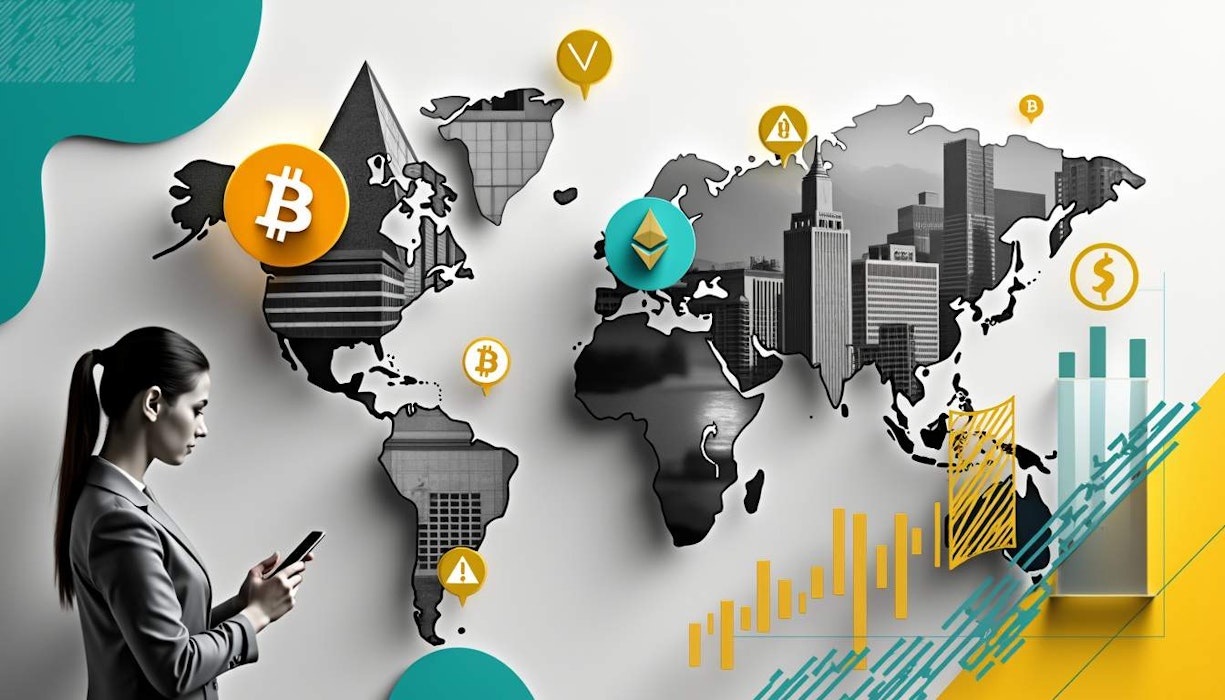Cryptocurrencies have emerged as a popular choice for cross-border payments, promising reduced fees and expedited processing times. However, what lies behind this alluring façade? Let's delve into the labyrinth of risks associated with using cryptocurrencies for global transactions, especially in economies that are often on shaky ground.
What Are the Main Risks?
Let’s start with the more obvious one: fraud. Cryptocurrencies are inherently anonymous, which is a double-edged sword. While that anonymity can facilitate privacy, it also serves as a haven for cybercriminals. Cases of fraud are rampant, and with very limited regulatory oversight in many jurisdictions, that anonymity emboldens them to act with impunity. If you're a business engaging in cross-border payments, the risk of falling victim to fraud is real, with the potential for considerable financial losses.
What Are the Financial Stability Risks?
Then, there's the dilemma of financial stability. A surge in the adoption of cryptocurrencies can lead to "cryptoization", where digital currencies begin to replace local currencies, undermining monetary policy and resulting in capital flight. This is particularly problematic for emerging markets, where crypto's notorious volatility could further complicate an already precarious economic situation.
What Are the Security and Compliance Issues?
On the security front, cross-border transactions are far from secure. Cyber threats like phishing and malware abound, and the convoluted payment pathways can result in chaos. The absence of a global Know Your Customer (KYC) framework makes it nearly impossible to vet those on the other side of the transaction.
What Are the Economic and Fiscal Risks?
The risks extend to fiscal policy, as well. Governments may find it difficult to collect taxes when cryptocurrencies become the norm. Multiple currencies pose challenges in defining what constitutes taxable income or value-added services, potentially jeopardizing fiscal health. The IMF warns that increased adoption of crypto assets could interfere with the effective delivery of monetary policy.
What Are the Contagion and Capital Flow Risks?
And let’s not overlook contagion risks. Sudden capital flow reversals from crypto can disrupt the economy, especially in nations with stringent capital controls. Utilizing cryptocurrencies outside of official channels may render capital flow management strategies ineffective, presenting new hurdles for policymakers.
What Should Small Businesses Do in Latin America?
Now, let’s look at how small businesses in Latin America can maneuver through this chaotic landscape of crypto trading.
How Can These Businesses Adapt?
To start, they need to grasp the regulatory landscape, as it varies significantly across Latin American countries. Some, like Mexico and Brazil, have stringent regulations, while El Salvador embraces a more crypto-friendly environment. Keeping abreast of these regulations is vital for compliance.
How Can They Use P2P Exchanges?
Peer-to-peer exchanges offer small businesses a way to transact directly, skipping the exorbitant fees of traditional banks. Nevertheless, AML compliance is still an uphill battle.
Could Blockchain Tech Help?
Blockchain technology could help facilitate cross-border payments, reducing transaction costs and enhancing security, especially for entities trading with the Eurozone.
Are Stablecoins a Viable Solution?
Small businesses will want to consider stablecoins. USDC and USDT provide more stability than traditional cryptocurrencies, allowing for smoother financial operations amid market instability.
Is Diversification a Wise Strategy?
Lastly, diversification into digital currencies can help small businesses protect against economic uncertainties. Using crypto assets as a hedge against inflation can ensure transaction stability while mitigating the effects of volatility.
Which Stablecoins Are More Stable Than Bitcoin?
For those living in hyperinflationary economies, stablecoins serve as a more reliable alternative to Bitcoin. Let’s take a look at a few key players.
How Do These Stablecoins Function?
USDC is a fiat-collateralized stablecoin, stabilizing its value against the U.S. dollar—an effective tool for those wanting to protect their savings.
How Else Can They Stabilize Value?
Tether is another well-known stablecoin pegged to the U.S. dollar. Countries such as Venezuela have adopted it as a stable store of value and as a medium of exchange.
How Do They Help in Hyperinflation?
Stablecoins provide individuals with a safety net, protecting their savings from local currency devaluation while facilitating seamless cross-border payments and granting access to global markets without the perils of local currency fluctuation.
How Does Crypto Market Volatility Impact Freelancers?
Freelancers and gig workers are not exempt from the crypto market's volatility. Let’s examine how it affects their financial strategies.
What Are the Negative Impacts?
The unpredictable nature of cryptocurrency prices can lead to transaction delays and additional costs. Freelancers may shy away from using volatile currencies for payments.
Are There Alternatives?
The volatility might push freelancers toward stable alternatives like USDT or USDC, which offer greater stability.
How Do Stablecoins Provide Protection?
While cryptocurrencies enable faster cross-border payments, volatility and regulatory uncertainty pose risks for gig workers. Stablecoins can serve as a reliable store of value, insulating workers from local currency fluctuations.
Are There Payment Solutions?
Freelancers often face challenges like slow payments and exorbitant fees. Stablecoins could offer easier access to global opportunities, facilitating swift and secure transactions while conserving the value of their earnings.
Summary
In summary, while the allure of cryptocurrencies for cross-border payments is undeniable, the associated risks—including fraud, regulatory challenges, and threats to financial stability—should not be overlooked. The landscape is fraught with dangers, but informed strategies can help navigate this turbulent terrain.
